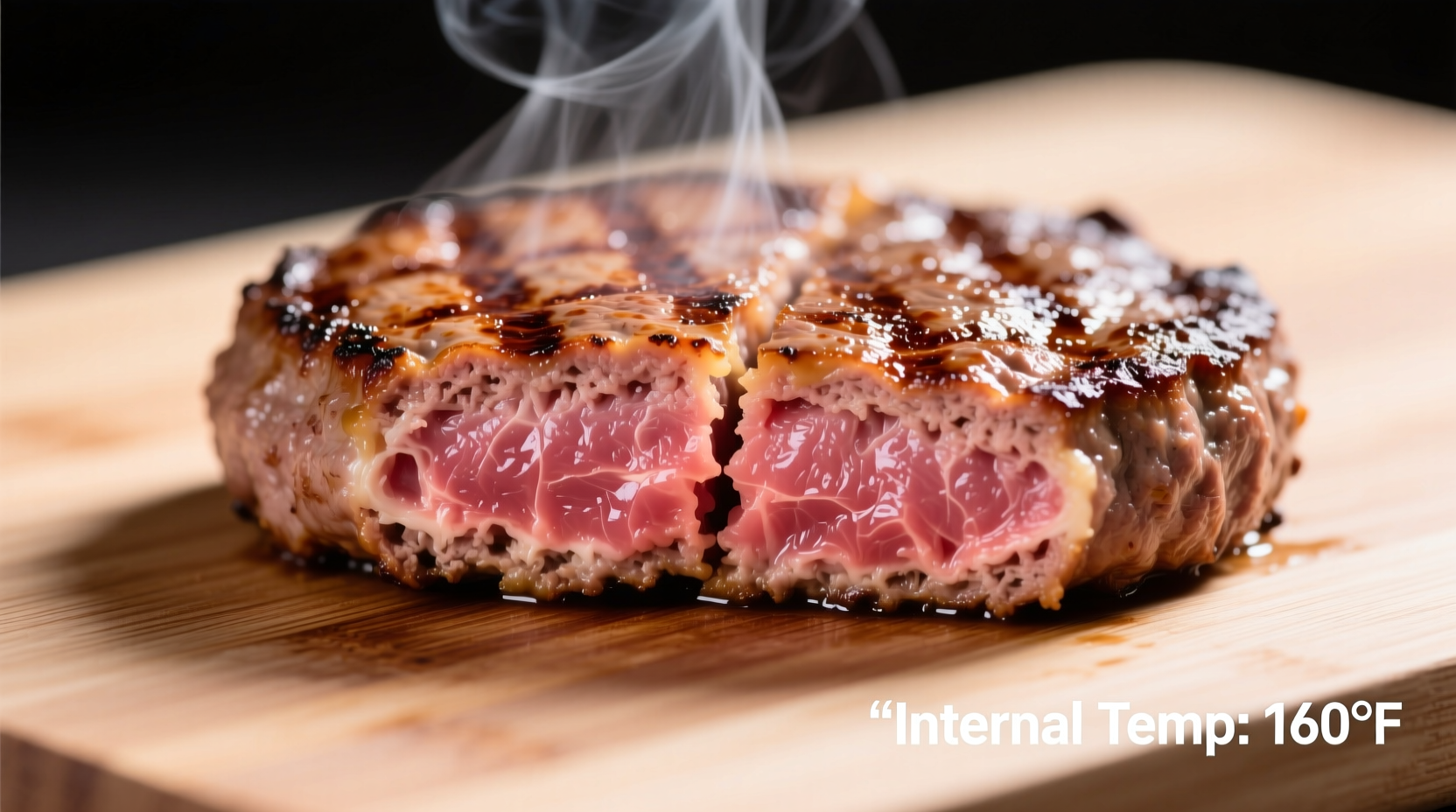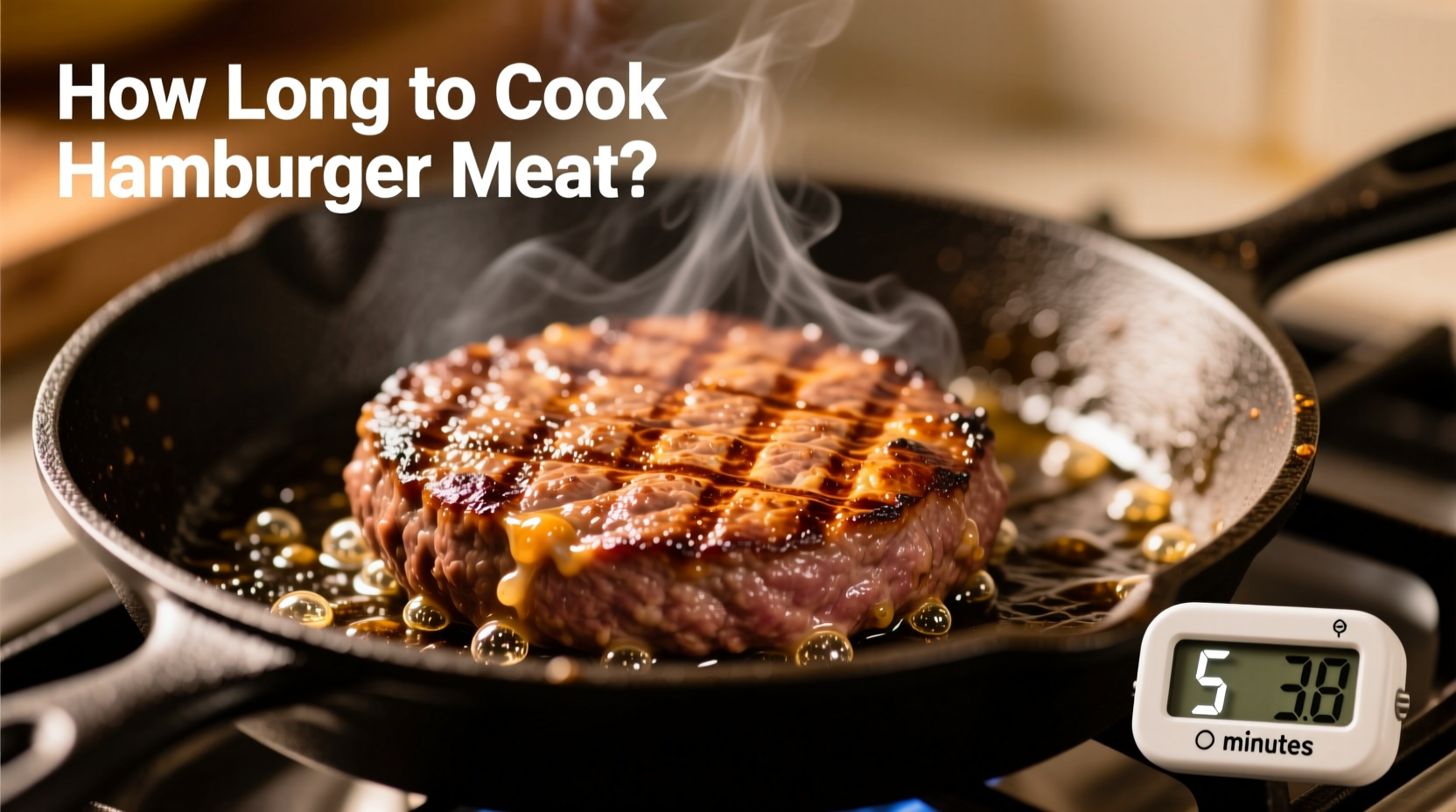Perfectly cooked hamburger meat strikes the ideal balance between food safety and juicy deliciousness. Many home cooks struggle with timing, resulting in either undercooked patties that pose health risks or overcooked burgers that end up dry and tough. This guide delivers precise cooking times based on scientific food safety standards and professional chef techniques, so you can consistently create safe, flavorful burgers every time.
The Science Behind Safe Hamburger Cooking
Unlike whole cuts of meat where surface bacteria are the primary concern, ground beef presents unique food safety challenges. The grinding process distributes surface bacteria throughout the meat, making thorough cooking essential. The USDA Food Safety and Inspection Service mandates that ground beef must reach 160°F (71°C) to eliminate harmful pathogens like E. coli and Salmonella.
Temperature matters more than time when cooking hamburger meat. While timing provides a useful guideline, variables like patty thickness, starting temperature, and cooking method significantly impact actual cooking duration. Relying solely on cooking time without verifying internal temperature risks either undercooked meat or dry, overcooked burgers.
| Cooking Method | Patty Thickness | Approximate Time | Internal Temp |
|---|---|---|---|
| Stovetop (medium-high) | 1/2 inch | 4-6 minutes per side | 160°F |
| Gas Grill | 3/4 inch | 5-7 minutes per side | 160°F |
| Charcoal Grill | 1/2 inch | 4-5 minutes per side | 160°F |
| Oven (400°F) | 1/2 inch | 15-20 minutes total | 160°F |
| Air Fryer (375°F) | 1/2 inch | 8-10 minutes total | 160°F |
Step-by-Step Cooking Process
Preparation Essentials
Before you start cooking, proper preparation sets the stage for success. Keep ground beef refrigerated until ready to use, and form patties with a slight indentation in the center to prevent bulging during cooking. For best results, avoid adding salt to the meat mixture before cooking, as this can draw out moisture and lead to tougher burgers.
Cooking Methods Compared
Stovetop cooking: Preheat your skillet or cast-iron pan over medium-high heat for 3-5 minutes. Add patties without oil (the fat in the meat provides sufficient lubrication). Resist pressing down on the patties, which squeezes out valuable juices. For standard 1/2-inch thick patties, cook 4-6 minutes per side.
Grilling: Whether gas or charcoal, maintain a medium-high heat zone (around 375-400°F). Place patties on the grill and avoid moving them for the first 3-4 minutes to allow proper sear development. Flip once and continue cooking until reaching 160°F internally.
Oven method: For hands-off cooking, place patties on a wire rack over a baking sheet and bake at 400°F for 15-20 minutes, or until reaching 160°F. This method produces evenly cooked burgers with minimal shrinkage.
How to Verify Doneness Correctly
The only reliable way to confirm your hamburger meat is properly cooked is by using an instant-read thermometer. Insert the probe horizontally into the thickest part of the patty, avoiding contact with the cooking surface.
When a thermometer isn't available, look for these visual indicators: juices should run clear (not pink), the meat should feel firm but not hard when pressed, and there should be no pink color visible in the center. However, these methods are significantly less reliable than temperature verification.
According to the USDA Food Safety and Inspection Service, ground beef must reach 160°F to be safe. At 150°F, pathogens may still survive, while temperatures above 170°F typically result in dry, overcooked meat.

Factors That Impact Cooking Time
Several variables affect how long to cook hamburger meat:
- Patty thickness: Thicker patties require longer cooking times. A 1-inch patty may need 7-9 minutes per side
- Starting temperature: Cold patties from the refrigerator take longer to cook than those brought closer to room temperature
- Cooking surface temperature: An improperly preheated pan or grill significantly extends cooking time
- Meat fat content: Higher fat content (80/20) cooks slightly faster than leaner blends (90/10)
- Ambient temperature: Outdoor cooking in cold weather requires longer cooking times
Essential Safety Practices
Follow these critical safety guidelines when handling and cooking ground beef:
- Keep raw meat refrigerated below 40°F until ready to cook
- Use separate cutting boards and utensils for raw meat
- Wash hands thoroughly after handling raw ground beef
- Cook hamburger meat within 1-2 days of purchase
- Allow cooked burgers to rest for 3-5 minutes before serving
- Store leftovers within 2 hours of cooking (1 hour if temperature exceeds 90°F)
Never partially cook hamburger meat and finish cooking later, as this creates ideal conditions for bacterial growth. If cooking for a crowd, use a food thermometer to check multiple patties, as cooking times can vary across the cooking surface.
Troubleshooting Common Issues
Patties sticking to the grill: Ensure your cooking surface is properly preheated and lightly oiled. Wait until a good sear forms before attempting to flip.
Uneven cooking: Create patties with uniform thickness and use an even cooking surface. Avoid pressing down on the burgers while cooking.
Excessive shrinkage: Form patties slightly larger than your bun size with a center indentation to counteract natural shrinkage during cooking.
Expert Tips for Perfect Burgers
Season patties generously with salt and pepper just before cooking for optimal flavor development. Add cheese during the last minute of cooking to allow proper melting without overcooking the meat. For restaurant-quality results, let your patties rest for 3-5 minutes after cooking to allow juices to redistribute throughout the meat.
When cooking multiple burgers, rotate their positions on the cooking surface halfway through to account for hot spots. This "hamburger meat cooking time adjustment" technique ensures consistent results across all patties.











 浙公网安备
33010002000092号
浙公网安备
33010002000092号 浙B2-20120091-4
浙B2-20120091-4